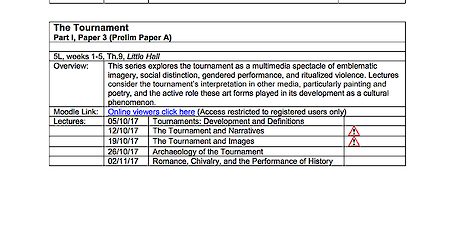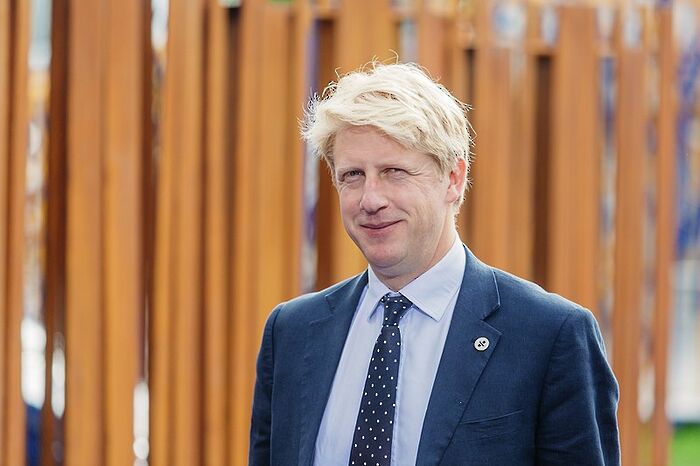In defence of trigger warnings
Trigger warnings are not the tool to stifle academic discussion the media thinks they are, counters Blue Cambridge

In the wake of the shocking #MeToo social media campaign, it’s difficult to fathom how anyone could still maintain a state of ignorance towards the victims of traumatic experiences like sexual harassment and abuse, many of whom have remained silent until now. The campaign has attempted to expose the magnitude of the problem, with women and men from all backgrounds using the hashtag as a rallying cry in response to the Harvey Weinstein case. It has shown that everyone, from Björk to nice Becky from the office, has a personal history which cannot be assumed or taken for granted.
And yet the latest scandal rocking the sensationalist boat over at The Sun headquarters is the content warnings issued on a ‘Notes on Lectures’ document circulated by Cambridge’s English faculty. Outrage has been expressed by various news outlets, branding the action an affront on free speech and yet another nail in the coffin for pedagogical institutions. Even academics in and around the Cambridge sphere, such as Mary Beard, Gill Evans and Stephen Fry, have expressed disapproval, with Fry remarking in 2016 that students should “just grow up” and “get rid of it”.
“The Cambridge English faculty is not singlehandedly destroying free speech”
The current discourse around trigger warnings seems to overlook the fact that those requesting such warnings are not doing so because they need ‘coddling’; these are people who are clearly aware that ‘life does not come with trigger warnings’, as their appeal for inclusivity stems from past experiences with trauma. They are forced, every day, to cope with the lifelong ramifications of traumatic experiences, and yet many in the media seem eager to frame students as ‘hyper-sensitive’ children, desperate to be shielded from the outside world.
Women under 30 are still experiencing staggering levels of sexual harassment and abuse, normalised at universities through 'sharking' and ‘lad culture’. Male suicide rates are shocking. 1 in 5 children are exposed to domestic violence. But a university department making adequate provisions for students potentially affected gravely by these prevalent societal issues? That’s the hill which many choose to die on.
The greatest fear, then, may be that trigger warnings will impede academic freedom, as lecturers will feel unable to present any controversial issues to their students, and eventually the liberal echo-chamber will engulf the final bastions of conservatism in Cambridge, reducing every student into Guardian-reading Green-voting vegans — they seem to not remember that many of those proffering these views were young people in the Seventies, and likely had their very own ‘green’ parties.
This terrifying dystopia, depicted by right-wing news outlets, frames trigger warnings as a tool to stifle academic discussion and curtail the freedoms of pedagogues everywhere. This ominous figure is nothing but a straw man, propped up by false logic and sensationalism, and attacked by the media so that they don’t have to confront their blatant bias and mock indignation that panders to middle aged conservatives who likely look back fondly on colonialism with their friends at the country club. Their arguments against trigger warnings could be applied to the provision of ingredient lists on food items: shouldn’t we axe these patronising lists and let students just tough it out against their life-threatening peanut allergy? Anaphylaxis is good for teaching resilience.
Ridiculous? Maybe. But the analogy helps to give a different view on trigger warnings; just as a list of ingredients on the back of a chocolate bar will tell a student whether the Yorkie they’re about to chow down on will send them to A&E, so too do trigger warnings help students recognise which environments might be harmful to their emotional and mental wellbeing. This doesn’t, as Mary Beard suggests, give all students a blanket excuse to shy away from “awkward and difficult” topics, but rather it gives affected students a chance to utilise the coping mechanisms acquired through years of dealing with unpredictable triggers.
The Cambridge English faculty is not singlehandedly destroying free speech. Their decision to put a trigger warning, informing students of the sexual and physical violence at the forefront Titus Andronicus and A Comedy of Errors, will not usher in a new age of academic Newspeak, like the media seems to be warning it will. And it’s frankly unpalatable in 2017 to see so many respected figures in academic and cultural fields putting forward condescending and detrimental messages to students, framing their experiences with trauma as a character flaw of the youth
 News / Uni Scout and Guide Club affirms trans inclusion 12 December 2025
News / Uni Scout and Guide Club affirms trans inclusion 12 December 2025 News / Cambridge Vet School gets lifeline year to stay accredited28 November 2025
News / Cambridge Vet School gets lifeline year to stay accredited28 November 2025 News / Cambridge study finds students learn better with notes than AI13 December 2025
News / Cambridge study finds students learn better with notes than AI13 December 2025 Science / Did your ex trip on King’s Parade? The science behind the ‘ick’12 December 2025
Science / Did your ex trip on King’s Parade? The science behind the ‘ick’12 December 2025 News / Pembroke to convert listed office building into accom9 December 2025
News / Pembroke to convert listed office building into accom9 December 2025








